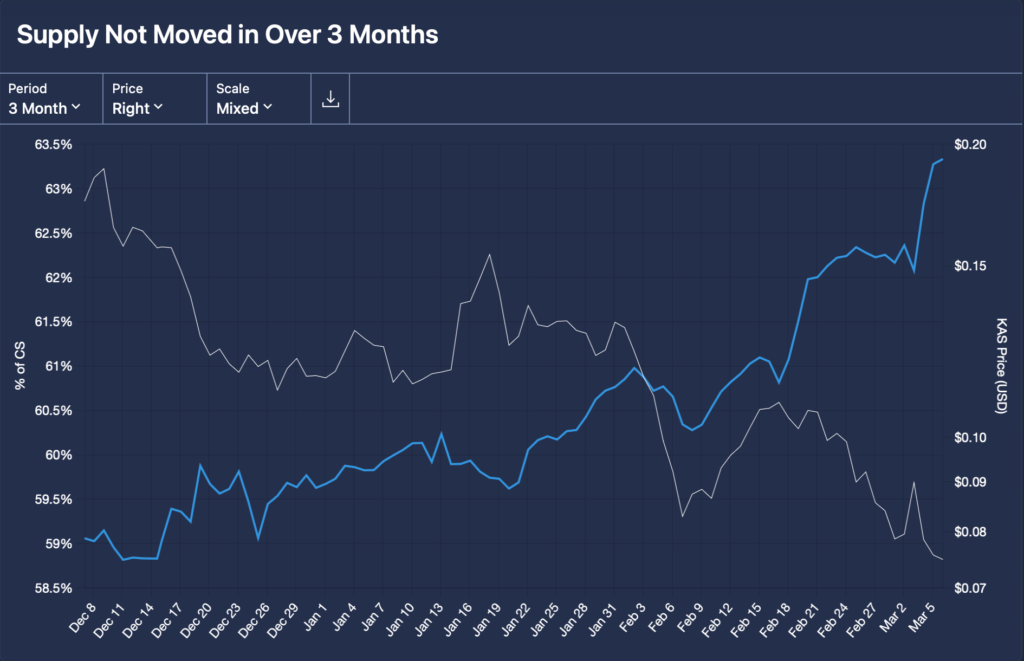Since December, wallets holding Kaspa for over 3 months have grown by 4.5%, now locking up over 63% of the total supply. At the same time, the price has been falling. So, who’s selling?

source: kaspalytics.com
It’s likely a mix of newer holders cutting losses, miners covering costs, and short-term traders getting flushed out. But there’s another layer most people overlook — market makers. In low-liquidity environments like Kaspa, where there are still no tier-1 exchange listings, it doesn’t take much to move the price. With limited order book depth, market makers can push the price down deliberately to trigger stop-losses, shake out weak hands, and accumulate cheaper coins while creating the illusion of weakness.
Meanwhile, long-term holders are quietly growing. More of the supply is getting locked up. Fewer coins are moving. And stronger hands are stepping in while the market gets distracted by the falling price.
This is a classic setup: patience is tested, weak hands exit, and the foundation for the next move is built behind the scenes. Eventually, the forced selling runs out, the games stop working, and the market is left with a tightly held supply and far less resistance on the way back up.
In markets like this, the quiet periods can be the most telling. The question is who’s paying attention.


